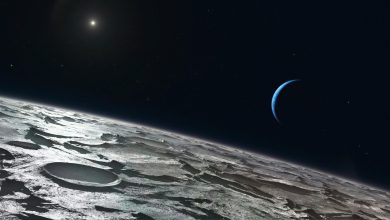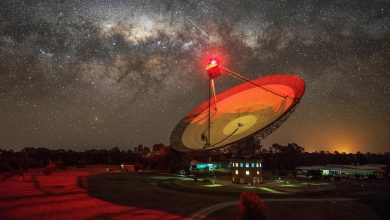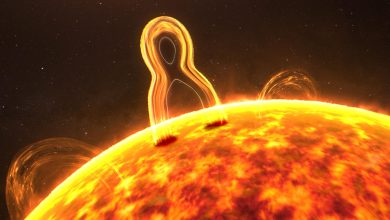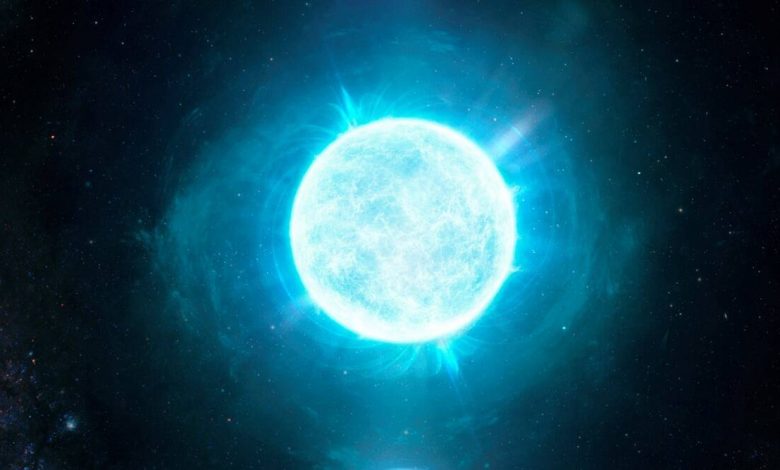
Astronomers may have discovered the smallest and heaviest white dwarf star ever seen, a smoldering ember about the size of our moon but 450,000 times more massive than Earth, a new study finds.
White dwarfs are usually about the size of Earth and are the cool, dim cores of dead stars that are left behind after average-size stars have exhausted their fuel and shed their outer layers. Our sun will one day become a white dwarf, as will about 97% of all stars.
Although the sun is alone in space without a stellar partner, many stars orbit around each other in pairs. If these binary stars are both less than eight times the mass of the sun, they will both evolve into white dwarfs over time.
The newfound white dwarf, designated ZTF J1901+1458, is located about 130 light-years from Earth in the constellation of Aquila and may be an example of what can happen when white dwarf pairs merge. The white dwarf is about 100 million years old, and has an extreme magnetic field almost 1 billion times stronger than our Sun’s. If the white dwarfs were more massive, they would explode in a powerful thermonuclear explosion known as a Type Ia supernova. However, if their combined masses fell below a certain threshold, they could form a new white dwarf heavier than either of its parents, which is what scientists think happened in the case of ZTF J1901+1458.
“Our discovery is the most massive and smallest white dwarf ever found,” study lead author Ilaria Caiazzo, an astrophysicist at the California Institute of Technology in Pasadena, said in a statement.
The discovery was made using the Zwicky Transient Facility at the Palomar Observatory in California, which scans the entire northern sky every two nights looking for cosmic bodies that blink, erupt, move or similarly change in brightness. Study co-author Kevin Burdge, an astrophysicist at the California Institute of Technology in Pasadena, first spotted the new white dwarf based on its high mass and rapid spin.
The researchers used a host of telescopes to help analyze the dead star, which is about 100 million years old or less. These included the Hale Telescope at Palomar, the W.M. Keck Observatory’s Keck I telescope, the European Gaia space observatory, the University of Hawaii’s Pan-STARRS (Panoramic Survey Telescope and Rapid Response System) and NASA’s Neil Gehrels Swift Observatory.
The scientists found the white dwarf was about 2,670 miles (4,300 kilometers) wide, making it a bit larger than the moon, which is about 2,158 miles (3,474 km) in diameter. ZTF J1901+1458’s tiny size makes it the smallest known white dwarf, edging out previous record holders, RE J0317-853 and WD 1832+089, which each have diameters of about 3,100 miles (5,000 km).
At the same time, the newfound white dwarf is about 1.35 times the mass of our sun, which may make it the most massive white dwarf discovered yet.
“It might be a bit counter-intuitive that the most massive white dwarf known is also the smallest white dwarf found,” Caiazzo said. This is because gravity and other factors lead white dwarfs to be smaller the more massive they are, she added.
This white dwarf is barely under the mass at which one would expect a white dwarf to detonate. “This one is really at the limit,” Caiazzo said. “If it was slightly more massive, it would have exploded.”
The white dwarf spins very rapidly, completing one revolution every seven minutes. When its progenitor stars spiraled together to merge, ZTF J1901+1458 inherited their combined spin, the researchers said. (The fastest-whirling white dwarf known, called EPIC 228939929, rotates every 5.3 minutes).
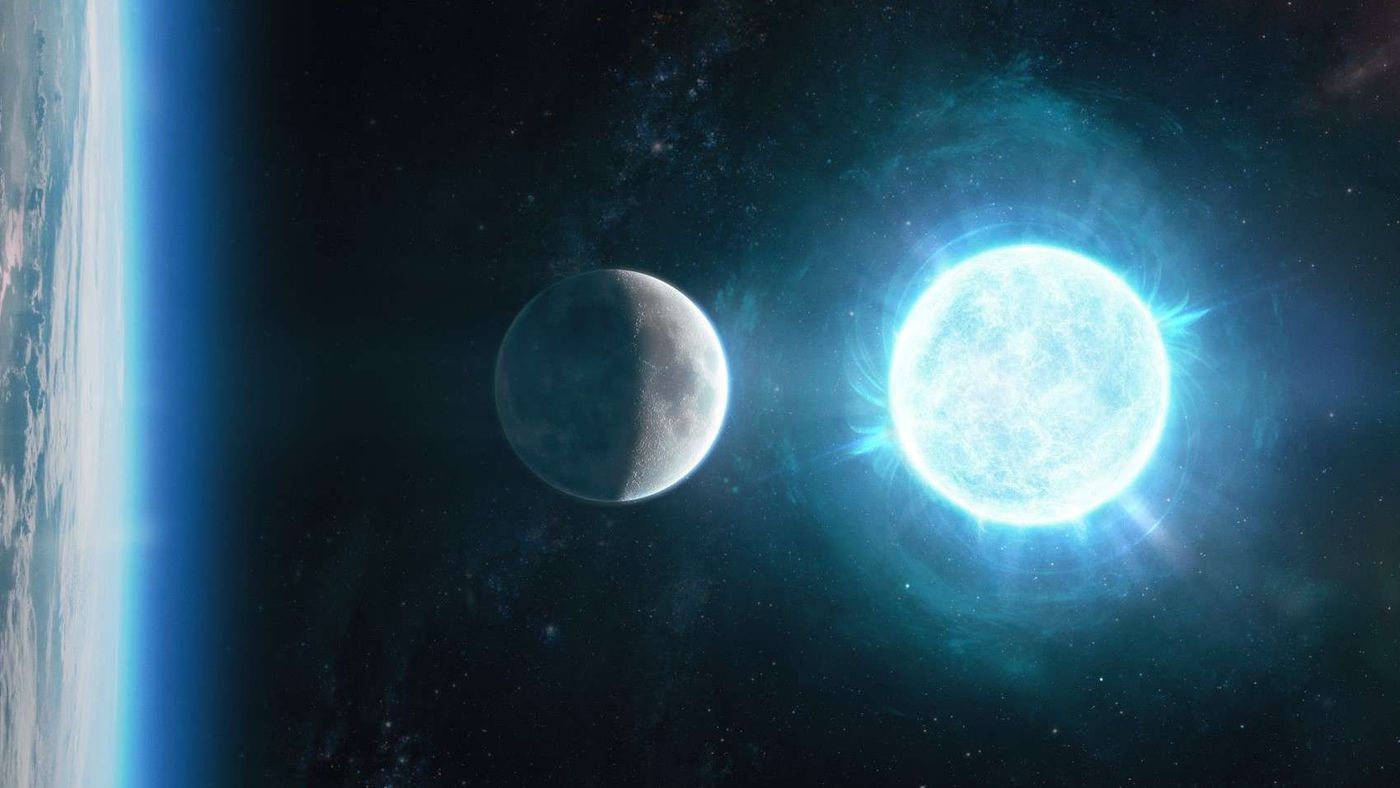
The white dwarf’s quick rate of spin also helps give it a very powerful magnetic field, more than one billion times stronger than Earth’s. “All of these characteristics — its mass and spin and high magnetic field — all suggest this white dwarf was not born the same as normal white dwarfs,” Caiazzo said.
Since this white dwarf is so massive, it may be possible that it might collapse further, as the incredible pressure within its core forces electrons to fuse with protons in atomic nuclei to form neutrons. “It could get even smaller than the moon,” Caiazzo said, perhaps shrinking as small as about 1,240 to 1,865 miles (2000 to 3000 km) wide.
If this shrinking does occur, at some point maybe 100 million to 200 million years from now, the white dwarf might become unstable and detonate as a thermonuclear type Ia supernova, Caiazzo said. Another possibility is that if a large enough number of electrons get captured, the white dwarf might potentially collapse to form a neutron-rich dead star known as a neutron star.
“A neutron star is an extremely dense object the mass of the sun but just the size of a city, so even more extreme than this white dwarf,” Caiazzo said.
If a white dwarf does collapse to form a neutron star, atoms fusing together within its core would release a huge amount of heat, potentially in just hours or days. “The entire white dwarf would very quickly burn,” Caiazzo said.
Neutron stars are thought to normally form when stars much more massive than our sun explode as supernovas, Caiazzo explained. If giant white dwarfs can also collapse to become neutron stars, a significant number of neutron stars may arise this way. However, if a white dwarf’s core freezes to become a crystalline solid faster than it shrinks, this collapse will likely not happen.
“We don’t know if such a collapse may happen, and if it does, which outcomes might occur,” Caiazzo said. “But if white dwarfs can create neutron stars, this could be a quite common way to form neutron stars.”
In the future, the scientists hope to use the Zwicky Transient Facility to find more white dwarfs like this one and to analyze white dwarfs as a whole.
“There are so many questions to address, such as what is the rate of white dwarf mergers in the galaxy, and is it enough to explain the number of type Ia supernovae?” Caiazzo said in a statement. “How is a magnetic field generated in these powerful events, and why is there such diversity in magnetic field strengths among white dwarfs? Finding a large population of white dwarfs born from mergers will help us answer all these questions and more.”
The scientists detailed their findings online June 30 in the journal Nature.

